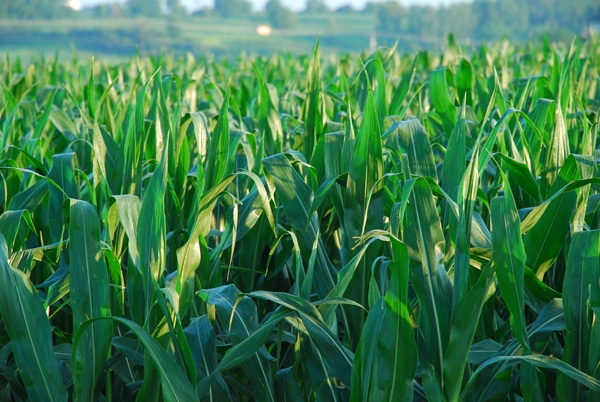
The week before last saw a lot of rain in much of Brazil’s main growing areas. Our family farm in Minas Gerais received a total of 8 inches during that week. This was spread out between four or five rains.
The crops needed rain if they were going to get through the next couple of weeks. This week is now hot and dry, with temperatures reaching 90 degrees each afternoon. The dry weather provided support for soybean prices; however, any potential yield loss will depend upon the length of those dry spells. If it only lasts a week, there will not be much yield loss. It will have to go well beyond two weeks for there to be any yield damage.
Too wet, to too dry
It is amazing how quickly things dry out here despite all the rain they had the week before last. We like to say how it goes from “too wet, to too dry, in two days.” Virtually all the mud puddles are gone. When the sun came out, I think the corn grew almost two feet in the last two weeks. It is now over 7 feet tall and starting to form ears.
After the rains in Mato Grosso a couple of weeks ago, a friend of mine was feeling a lot better and admitted that the dry weather was not as widespread as he previously had thought. A few weeks ago he was extremely depressed as the planting season had gotten off to a rocky start but the rains in early December helped improve the outlook dramatically.
I told him that with as high of prices that they had, it would help offset any yield losses to the point that it would still be difficult to have a loss. He agreed with that. He had forward contracted prices between $7 and $12.35 with his average price being closer to $9 per bushel so far.
In local currency, this is a phenomenal price. If he can sell his unsold crop at $12 he will be very profitable.
Brazil’s big crop
USDA left Brazil’s crop size at 133 Million Metric Tonnes. Local analysts are more timid, estimating closer to 131 MMT. Even at 131 MMT, that is still 5 MMT more than last year’s record crop of 126 MMT. his means Brazil’s crop could still deteriorate a few MMT more and still produce a big crop.
Not everyone was lucky, though. Most people are aware that they plant corn as a second crop behind soybeans, but they also plant a lot of cotton as well. There are reports that some farmers in Mato Grosso are so disappointed with their soybean crop, then rather than replant soybeans, they jump started their second crop and went straight to cotton.
If this is true, it is unclear on how many acres it represents. Most likely not enough to really move the needle. My friends in Mato Grosso are still adamant that there are lot of really good areas with strong yield potential that will help offset other problematic areas.
Brazilian exports - and imports
The majority of the crop has been forward sold with some regions selling as much as 70% as they are on the back end of their growing season. Brazil is out of soybeans now and so there is nothing left to export. They have begun importing soybeans from elsewhere until the harvest begins in January. They have imported roughly 600,000 metric tons more of soybeans than last year at this time.
We recently conducted a webinar on Brazil’s phenomenal ag growth, “The Rise of Brazilian Agriculture and How Farmers Can Compete.”
Futures trading involves risk. The risk of loss in trading futures and/or options is substantial and each investor and/or trader must consider whether this is a suitable investment. Past performance is not indicative of future results. Trading advice is based on information taken from trades and statistical services and other sources that CommStock Investments believes to be reliable. We do not guarantee that such information is accurate or complete and it should not be relied upon as such. Trading advice reflects our good faith judgment at a specific time and is subject to change without notice. There is no guarantee that the advice we give will result in profitable trades.
The opinions of the author are not necessarily those of Farm Futures or Farm Progress.
About the Author(s)
You May Also Like






